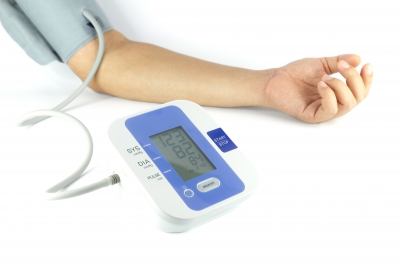Aggressively lower blood pressure to reduce heart disease risk 33%

One out of three U.S. adults, 33 percent, have high blood pressure. This equals around 70 million Americans.
About 65 percent over the age of 60 have high blood pressure.
High blood pressure increases your risk for heart disease and stroke. These are two leading causes of death in the U.S.
What is high blood pressure?
High blood pressure is defined as having a blood pressure at or above 140/90 mm Hg.
140 (top number) is your systolic reading.
90 (bottom number) is your diastolic reading.
Current guidelines for treating high blood pressure are to lower systolic blood pressure to below 140 mg Hg and below 130 mm Hg for adults with kidney disease or diabetes. The most commonly prescribed treatment is blood pressure medication, which can be effective, but includes potential side effects.
Would the benefits of lower blood pressure guidelines outweigh the cons associated with more aggressive treatment and higher medication dosage?
The Systolic Blood Pressure Intervention Trial (SPRINT) began in the fall of 2009, including 9300 participants 50 years of age or older. It is worth noting 28% of participants were over the age of 75. SPRINT is the first study to investigate the impact of maintaining a systolic blood pressure at a lower level than current guidelines and the impact on cardiovascular and kidney disease.
SPRINT investigators divided participants into two groups.
Group 1: Target systolic blood pressure of less than 140 mm Hg. On average this group was prescribed two different blood pressure medications.
Group 2: Target systolic blood pressure of less than 120 mm Hg and received, on average, three blood pressure medications.
The more aggressive approach with group 2 reduced rates of cardiovascular disease by 33% and risk of death by almost 25% compared to group 1.
The National Institutes of Health stopped the study early due to significant results.
“This study provides potentially lifesaving information that will be useful to health care providers as they consider the best treatment options for some of their patients, particularly those over the age of 50”, states the director of the National Heart, Lung, and Blood Institute.
What about side effects?
Lowering blood pressure for participants was not necessarily easy. More than one medication was needed. Many blood pressure medications are available as generics, so cost is not necessarily a deterrent to this more aggressive approach.
One question is whether or not a lower blood pressure means less blood delivered to the brain and kidneys and the impact on dementia. These results, as well as impact on kidney disease and cognitive function, are still being analyzed.
You do not need to take action now, but be aware guidelines could shift and your doctor may discuss a new treatment approach at a future appointment.
Do not rely solely on medication to lower your blood pressure levels. Diet and lifestyle changes can be very effective. Access the free e-course 7 Natural Ways to Lower Blood Pressure at http://lowerbloodpressurewithlisa.com.
Lisa Nelson RD
Health Pro for HealthCentral
Image courtesy of markuso / FreeDigitalPhotos.net



